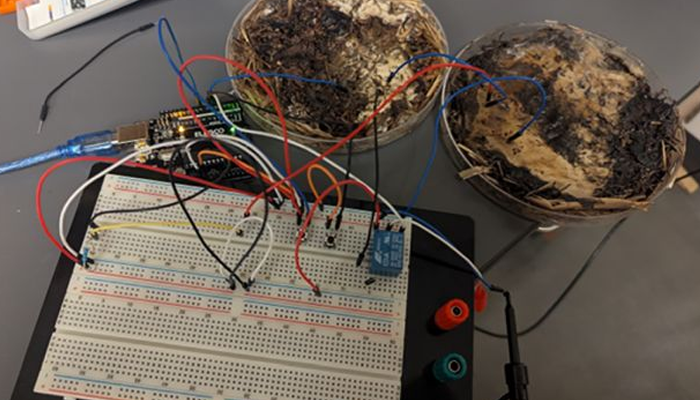.webp)
Here are today’s most important updates from the realm of Science and Space.
Webb’s Cosmic Time Machine May Have Found the Universe’s Earliest Galaxy
Using the James Webb Space Telescope (JWST), astronomers have spotted a very bright and mysterious object that could be a galaxy that emerged just 100 million years after the Big Bang, which would make it the universe's earliest known galaxy, a new study suggests. Alternatively, Capotauro may be an extraordinary brown dwarf (a "failed star" that is more massive than the largest gas giant planets but not large enough to sustain nuclear fusion in its core) that lives on the outer edges of the Milky Way while smoldering at a mere 80 degrees Fahrenheit (27 degrees Celsius). Capotauro's exact identity is not certain yet.
Cyclone Montha Unleashed: Satellite Captures Its Terrifying Power From Space

Cyclone Montha has intensified into a severe cyclonic storm over the Bay of Bengal, unleashing its fury on India’s eastern coast and prompting high alert in Andhra Pradesh and Odisha. Striking satellite images from Isro’s INSAT-3DR satellite captured the swirling mass of clouds and the dense, spiralling eyewall, vividly illustrating the storm’s monstrous scale as it bore down on land. Packing winds clocked at up to 110 kmph, Montha has already triggered heavy rainfall and squally winds along the coasts of Andhra Pradesh and Odisha as it heads toward a projected landfall near Kakinada later tonight. Waves have risen as high as 4.7 metres off parts of the Andhra coast.
The Future Is Bright: AI Now Computes at the Speed of Light

Researchers have developed the Optical Feature Extraction Engine (OFE2), an optical engine that processes data at 12.5 GHz using light rather than electricity. Its integrated diffraction and data preparation modules enable unprecedented speed and efficiency for AI tasks. Demonstrations in imaging and trading showed improved accuracy, lower latency, and reduced power demand. This innovation pushes optical computing toward real-world, high-performance AI. The proposed optical computing chip enables the high-speed, parallel processing for quantitative trading with unprecedented low latency, accelerating the crucial and demanding step of feature extraction.
From Kitchen to Computer: Shiitake Mushrooms Store Data Like a Chip

Scientists have created working memristors using shiitake mushroom mycelium, potentially paving the way for low-cost memory hardware alternatives. Notably, the fungal memristors 'remember' past electrical states, leveraging the neuron-like properties of the mycelium. This innovative approach could offer a cost-effective solution to current memory hardware, made from materials like titanium dioxide or silicon, Science Alert reported. This breakthrough supports the development of brain-like computers, requiring components that mimic brain parts, such as synapse-like memristors that manage information flow between neurons. Scientists are exploring mushrooms as computer parts due to mycelial networks' brain-like behavior, transmitting electrical and chemical signals. However, engineering is needed to harness their potential. The team chose shiitake mushrooms for their robustness and resilience, growing nine samples in controlled conditions to develop functional memristors.


.webp)
.WEBP)
.WEBP)
.webp)


.webp)
.webp)
.webp)

